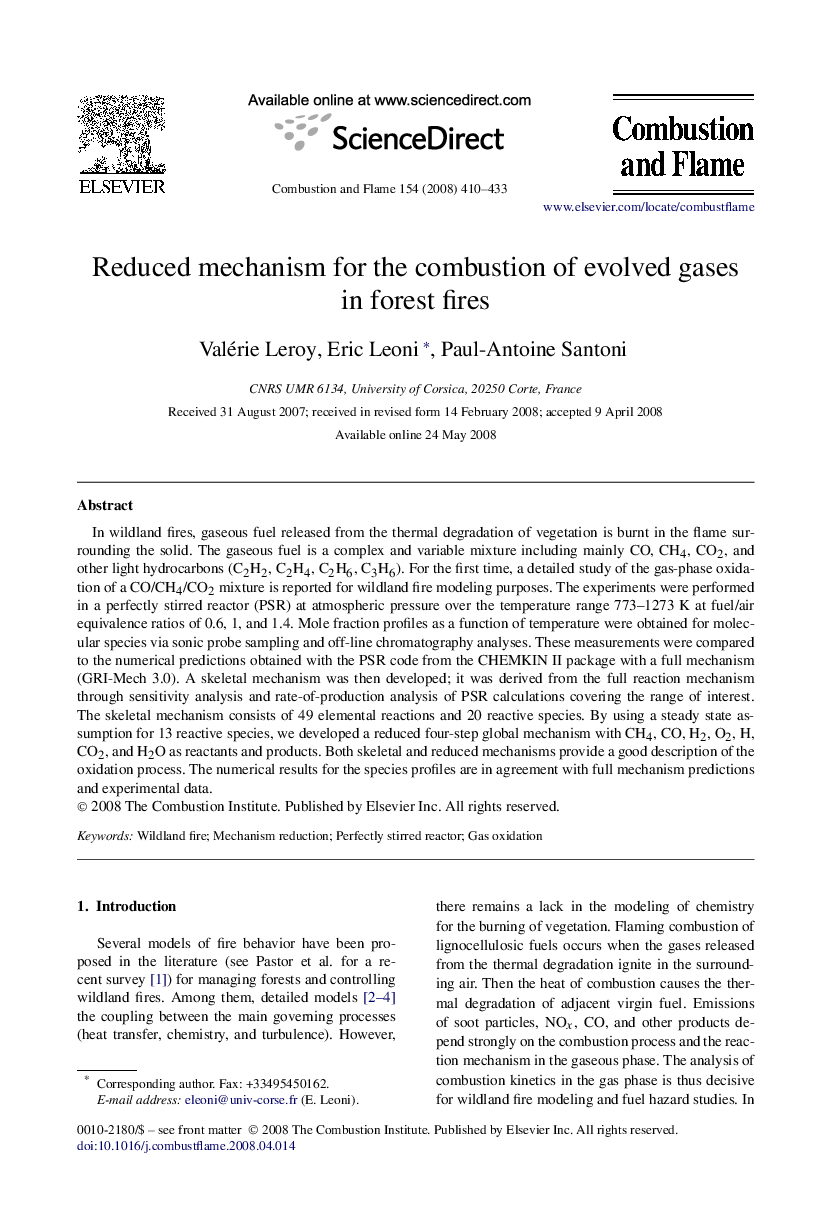| Article ID | Journal | Published Year | Pages | File Type |
|---|---|---|---|---|
| 167826 | Combustion and Flame | 2008 | 24 Pages |
In wildland fires, gaseous fuel released from the thermal degradation of vegetation is burnt in the flame surrounding the solid. The gaseous fuel is a complex and variable mixture including mainly CO, CH4, CO2, and other light hydrocarbons (C2H2, C2H4, C2H6, C3H6). For the first time, a detailed study of the gas-phase oxidation of a CO/CH4/CO2 mixture is reported for wildland fire modeling purposes. The experiments were performed in a perfectly stirred reactor (PSR) at atmospheric pressure over the temperature range 773–1273 K at fuel/air equivalence ratios of 0.6, 1, and 1.4. Mole fraction profiles as a function of temperature were obtained for molecular species via sonic probe sampling and off-line chromatography analyses. These measurements were compared to the numerical predictions obtained with the PSR code from the CHEMKIN II package with a full mechanism (GRI-Mech 3.0). A skeletal mechanism was then developed; it was derived from the full reaction mechanism through sensitivity analysis and rate-of-production analysis of PSR calculations covering the range of interest. The skeletal mechanism consists of 49 elemental reactions and 20 reactive species. By using a steady state assumption for 13 reactive species, we developed a reduced four-step global mechanism with CH4, CO, H2, O2, H, CO2, and H2O as reactants and products. Both skeletal and reduced mechanisms provide a good description of the oxidation process. The numerical results for the species profiles are in agreement with full mechanism predictions and experimental data.
